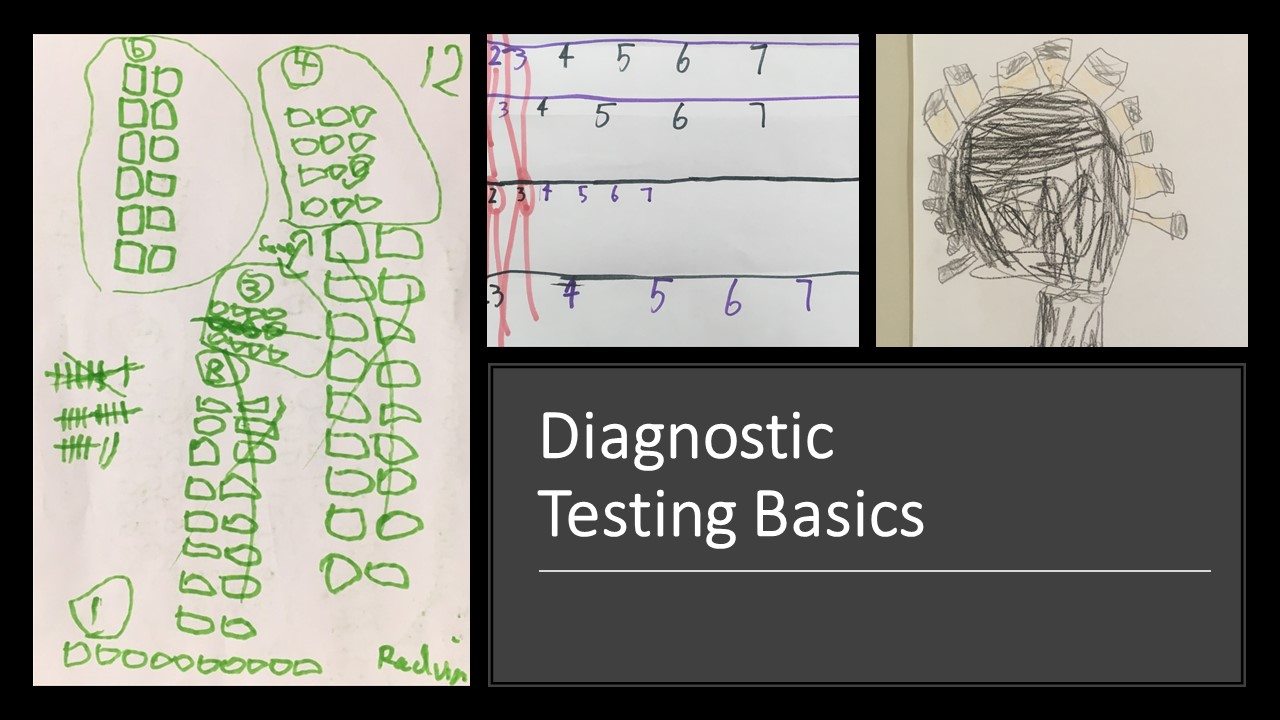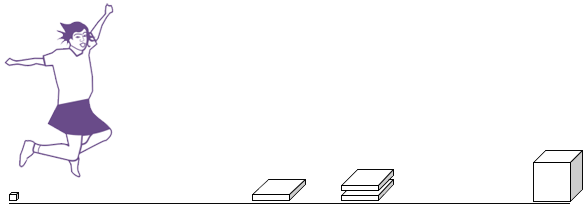
Formative assessment, developmental stages and starting the year well
The goal of formative assessment should always be to find out what each student NEEDS next, rather than focusing
This problem will help you check whether or not your students have the “base ten” concept. Adaptations for each grade follow the problem.
1. Draw a chalk line across your carpet. Place a 1 MAB at one end and a 1000 MAB at the other end. Ask your students to fold a piece of paper in half to make a representation of the line and write the numbers 1 and 1000 at either end. Then ask them to predict where they think 100 goes on the line. Many students (even grade 7s) put 100 in the middle. Try not to look shocked at this point.

When students struggle with base ten concepts, they need to be helped to self-correct their misconceptions rather than being corrected by the teacher. This activity has these rules: (1) everyone must have a turn, (2) when it is your turn you can move any of the blocks except for the 1 and 1000, (3) if it is not your turn then you are not allowed to touch the blocks J
1. Place the 100 MAB in the middle of the line. Then give the students the following MAB in this order: 200, 300, 900, 800, 400, 500, 600 and 700. Choose one student to place each successive number on the line. Ask them if they want to move any of the other blocks or if they’re happy with the positions.
2. Once all of the hundreds are on the line, it will probably still have a great big gap between the 1 and the 100. Now it is time to “walk” the line and say the numbers. Take one step between each block and have the students say the name of the number. Ask students “does that look right to you?” Hopefully at this point they will decide to move the 100 closer to the 1.
3. Remove all of the hundreds off to the side of the line except for the 500. Ask students what they could tell you about 500 and 1000. Someone should decide that 500 is half of 1000. If they don’t, ask how many of the 100 blocks there are in the 1000 cube. Watch out for students who say 6! Usually at this point they decide that 500 needs to go in the middle, and they sort out the relative positions of the other numbers pretty well.
4. Now comes the fun bit… take off 300 and 400 and ask the students if the blocks need to move now that some of the numbers are missing. Many students will have decided that the blocks need to have “even spaces” regardless of what numbers are there. Bring the blocks back and ask if there is still space. Repeat using other numbers until the students decide that they have to leave room for numbers that aren’t shown.
5. And again… give the students numbers such as 120 to add to the number line. Watch to see if they try to move the blocks to “make space”. Remove the additional numbers and watch them move the blocks back. Repeat using other numbers until the students decide that they can’t make some numbers smaller or bigger depending on what other numbers are beside them.
Adjustments: Grade 1 or 2: Use numbers from 1-10 with bowls containing counters. Watch out for students who don’t have any spaces. Grade 6 or 7: 1 to 1 million (try using a 10m long line).

The goal of formative assessment should always be to find out what each student NEEDS next, rather than focusing
Recently I’ve been pondering findings from a major report into Australian schooling that kids who are struggling in maths by
by Tierney Kennedy Why is it that so much of education research goes seemingly unnoticed or ignored by teachers (Joram
As term 4 is upon us many teachers are struggling with how to get everything done. Realistically, now is the
You may have noticed that kids have a few issues with fractions… but it can be tricky to understand what

The successfulness of any intervention is largely dependent on matching the strategies selected to the needs of the students and

KENNEDY PRESS PTY LTD
FOR ALL ENQUIRIES, ORDERS AND TO ARRANGE PD:
© COPYRIGHT 2024 KENNEDY PRESS PTY LTD ALL RIGHTS RESERVED TERMS & CONDITIONS